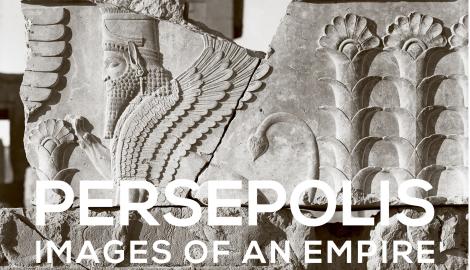A new exhibition at the Oriental Institute Museum of the University of Chicago will give visitors a rare glimpse inside the ancient city of Persepolis. “Persepolis: Images of an Empire,” which opens Oct. 13, includes archival photographs and a new multi-media presentation that document an astounding imperial complex of palaces constructed by the Persian kings Darius, Xerxes, and Artaxerxes I and III, who ruled between 522 and 338 BC in today’s southwest Iran.

These Persian kings were the greatest powers in the ancient world, ruling the entire Middle East and battling for supremacy against their rivals, the Greeks. This half-century conflict, culminating in battles with Alexander the Great, has been the subject of popular interest in films such as “300.”
The tremendous political and economic power of the Persian kings was expressed by the scale of the architecture at Persepolis, especially the monumental audience halls with grand stairways decorated with finely carved images of people from throughout the kingdom carrying precious gifts to their Persian overlords.

“[These photographs] are hauntingly beautiful windows to the past,” said exhibit curator Dr. Kiersten Neumann. “They present a promise of the opulence and lavishness that was Persepolis, yet they also capture its solitude and melancholy—the resolute ruins of a once equally determined empire.”

The multi-media presentation continues that tradition of innovation, juxtaposing vintage aerial photographs with new satellite imagery to show how much the terrain has changed over the last eighty years and using these images to create a 3D model of the original architecture.

The exhibit also features quotes from travelers, including Lord Byron and William Francklin, an officer of the British East India Company who visited the site in the early 1800s, expressing their wonder and admiration of the ruins. A final panel explores the question “What Was Persepolis?” with comments from modern scholars who try to solve the mystery of the role and purpose of the grand complex.
The exhibit will be on view through September 11, 2016.
For further information, visit: http://oi.uchicago.edu/museum-exhibits/persepolis
Source: The Oriental Institute Museum, University of Chicago [October 06, 2015]